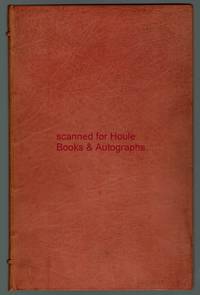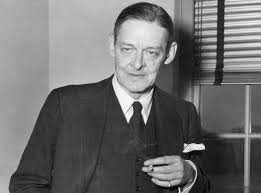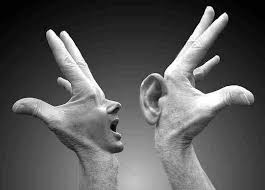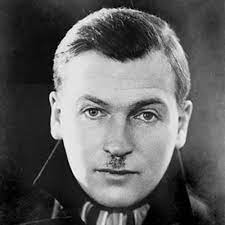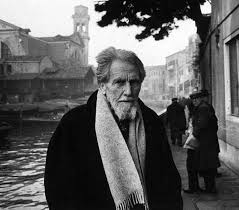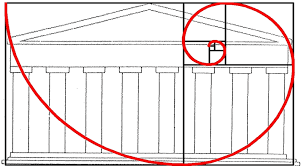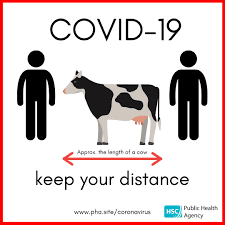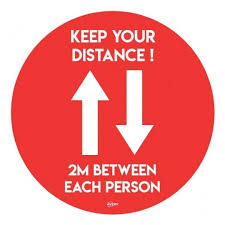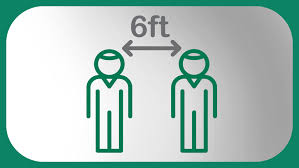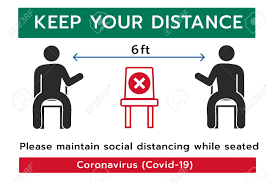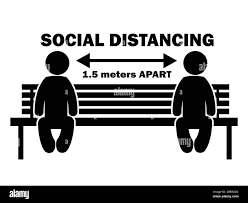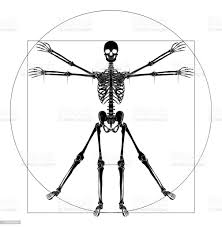Ezra Pound and T.S. Eliot are considered two of the most important poets of the modern era – see Wikipedia listings below. They stand apart, almost as gods in their field, recognised and lauded by all; well, perhaps not by everyone.
The tiny publication had been purchased years ago; it was rediscovered when moving the library that had been built up over fifty years. It is titled Ezra Pound & T.S. Eliot, and subtitled A lecture by Richard Aldington.# The booklet was published by Oriole Chapbooks* in New York, maybe in 1939, the year of the lecture. After picking it up from the pile that the little publication had found itself on top of, this slip of a text was put aside to read, with no particular expectation other than perhaps finding out more about the work of these legendary figures: Pound's contribution to poetry began in the early 20th century with his role in developing Imagism, a movement stressing precision and economy of language. Working in London as foreign editor of several American literary magazines, he helped discover and shape the work of contemporaries such as T.S.Eliot, Ernest Hemingway, and James Joyce: (Eliot) is a central figure in English-language Modernist poetry.(Wikipedia – see below).
The surprise was that Aldington proved to be an articulate and savage critic of both Pound and Eliot. One is a little taken aback by the clarity and certainty of his criticism that is clearly referenced. He points out serial plagiarism in the works of both these men. One wonders why this work has not been previously called out, and known for this cheating instead of being considered brilliant modern poetry – some of the best. Aldington’s text was presented as a lecture in 1939; have we been hoodwinked for 82 years? Are those who applaud these writers without question completely uninformed; just ‘yes’ men and women? Aldington is no fool; an English writer and poet, and an early associate of the Imagist movement. . . . His 50-year writing career covered poetry, novels, criticism and biography. (Wikipedia – see below). He is just the person who is able to understand the ‘tricks’ used by his contemporaries with his broad reading of poetry, and his understanding of the craft. He makes no apologies for his rigour in exposing their sly games. The lecture has been called a ‘literary assassination.’ One has to ask: have all those who have praised this work been ignorant, just too compliant?
Aldington notes how both men would like to be seen as potential professors: both would like to give the impression that if they chose they could be very successful professors. Unlike most poets, Eliot is not only a competent but brilliant lecturer. Pound, on the other hand, relies on a faulty memory, an almost non-existent power of improvisation and a cough.(p.7) One is given a taste of what is to come.
p.10/11
This limits our search for Pound, as an original poet, to the single volume of collected short poems from which we have already deducted Cathay. And when we examine these poems attentively, what do we discover but the significant fact that a considerable number are translations or close adaptations of other poems. There are eight from Heine and six from the Greek anthology, while others are translated from Charles d’Orleans, Bertrand de Born, Propertius, du Bellay, Leopardi, the anonymous Seafarer, and so forth. Moreover, a much larger group of these poems is paraphrased or imitated from or based on the poems of other writers without acknowledgement or, at best, with only slight or indirect hints of derivation. On running over the book again I find this list of poets imitated: W.B. Yeats, Cino da Pistoia, Robert Browning, Bertrand de Born, Francois Villon, Dante, Piere Vidal, Arnaut de Marvoil, A.E. Housman, Catullus, Sappho, Albert Samain, Ibycus, Theophile Gautier, Walt Whitman, several Chinese Poets, Sumer is i-cumen in, Voltaire, mediaeval poets of Provence, numerous modern French Symbolistes, Ronsard and Edmund Waller.
This is an astonishing list.
p.12
It is a perversity, a disguise for impotence; and the effort to impress the unwary while concealing the lack of creative power through this parade of out-of-the-way learning is only too obvious as soon as you begin to reflect.
p.21
Eliot is far too clever in his dry calculating way ever to be trivial with Pound’s almost endearing spontaneity of silliness. He is far too accomplished a trick-writer. As a rule, when he introduces his urban trivialities, as he so frequently does, he is careful to place them in immediate contrast with some would-be profound remark, a trick he learned from one of his early admirations in verse, Jules Laforgue.
p.24/25/26
The next fragment starts off with a fine piece of preciosity:
“The river’s tent is broken: the last fingers of leaf
Clutch and sink into the wet bank.”
I like that – it is a genuine piece of observation, not very original, to be sure, but true of the Thames backwater in autumn. But then within a few lines we have unacknowledged quotations and misquotations from Edmund Spenser (thrice repeated), the Bible, Shakespeare, and Paul Verlaine.
. . .
I would not have you think that the unacknowledged quotation in modern poems should be entirely avoided, though I think Eliot’s abuse of it has now made avoidance essential.
. . .
But it is surely an abuse of public credulity when we find “critics” gravely admiring the profound and esoteric significance of a whole page of Murder in the Cathedral which is lifted without quotation marks from the Sherlock Holmes detective story, The Musgrave Ritual. (What on earth has this to do with Becket unless as a modern “ducdame”?) But when the unacknowledged quotation is abused as often as it is by Eliot it becomes a monotonous and at length annoying trick. An original writer should be able to express his thoughts in his own words and not always have to filch from his predecessors.
Aldington’s point about “critics” gravely admiring the profound and esoteric significance of what is usually considered to be plagiarism – one of the great sins in the writers’ world - sums up the matter. His own stinging critique of Pound and Eliot opens up a whole new understanding that has been buried, glossed over by the writings of other “critics” that appear to have accepted everything at face value as ‘the work of the master.’ This “supportive analysis” is very similar to the “criticism” that we so often get in architecture.
The point here is that rigorous criticism needs to be encouraged and published, in spite of reputations. The idea of maintaining a silence induced by the hagiography of journalism that seeks its own glories, (e.g. see ‘Granny Flat’ text - https://voussoirs.blogspot.com/search?q=granny+flat ), or writing cutely, cleverly, with little true understanding, needs to be squashed. That all publications should only present hype that encourages the works to be seen as uniquely and amazingly creative, the work of an heroic genius who has a bespoke message for the world, needs to be put aside. The concept of critic as winger, whistle-blower, and as a weak individual accommodating for personal failures, needs to scrapped. This change will take time, because Modernism has encouraged us all to see good work as that of heroes, singular and spectacularly brilliant, alone, known as published with clever, glossy, shrewd photographs seeking only amazement and praise, guiding ‘seeing’ - how others should ‘view’ this masterpiece. One recalls how Harry Seidler took his own preliminary images to define the angles and frames for the ‘real’ photographer to replicate.
This circumstance is the antithesis of good criticism that should not be edited or varied because of a popular, persuasive personality, the power of the press, or the preferences of the populace that might involve both of these situations – be framed by them. If the world is to rediscover a rich and supportive contentment in the arts and architecture, it needs true criticism, researched, not just personal gripes, or good criticism that is dismissed as such: it needs this work to be respected, listened to, and spoken about. The idea that all things architectural might be seen only as glossy and fabricated photographs presented with a preferred story, needs to be changed. We need the everyday to be uniquely special and rich. We need a Street View that we can delight in rather than use to expose the problems and the failures of the ‘real’ world: see - https://voussoirs.blogspot.com/search?q=street+view
The critic needs to be seen as one with an eye and mind as unique as that which the artist/architect is seen to have; and it should be just as respected. Change is needed. Honest discussion needs to become a possibility, with the hope that things might be changed, instead of opinions being fixed and forced down other’s throats, or rumbled over, squashing different, sensitive opinions. Aldington has set a marvellous example for this future. Alas, this was back in 1939. It is going to require a massive effort to make any change. Just look at the reputations that Pound and Eliot have managed to maintain in spite of the thorough, savage critique. Might we all soon start believing in fairies?
WIKIPEDIA EXTRACTS
Ezra Weston Loomis Pound (30 October 1885 – 1 November 1972) was an expatriate American poet and critic, a major figure in the early modernist poetry movement, and a fascist collaborator in Italy during World War II. His works include Ripostes (1912), Hugh Selwyn Mauberley (1920), and his 800-page epic poem, The Cantos (c. 1917–1962).[1]
Pound's contribution to poetry began in the early 20th century with his role in developing Imagism, a movement stressing precision and economy of language. Working in London as foreign editor of several American literary magazines, he helped discover and shape the work of contemporaries such as T.S. Eliot, Ernest Hemingway, and James Joyce. He was responsible for the 1914 serialization of Joyce's A Portrait of the Artist as a Young Man, the 1915 publication of Eliot's "The Love Song of J. Alfred Prufrock", and the serialization from 1918 of Joyce's Ulysses. Hemingway wrote in 1932 that, for poets born in the late 19th or early 20th century, not to be influenced by Pound would be "like passing through a great blizzard and not feeling its cold."
Angered by the carnage of World War I, Pound blamed the war on finance capitalism, which he called "usury". He moved to Italy in 1924 and through the 1930s and 1940s promoted an economic theory known as social credit, wrote for publications owned by the British fascist Sir Oswald Mosley, embraced Benito Mussolini’s fascism, and expressed support for Adolf Hitler. During World War II and the Holocaust in Italy, he made hundreds of paid radio broadcasts for the Italian government, including in German-occupied Italy, attacking the United States, Franklin D. Roosevelt, Great Britain, international finance, munitions makers and mongers, and Jews, among others, as causes, abettors and prolongers of the world war, as a result of which he was arrested in 1945 by American forces in Italy on charges of treason. He spent months in a U.S. military camp in Pisa, including three weeks in an outdoor steel cage. Deemed unfit to stand trial, he was incarcerated in St. Elizabeths psychiatric hospital in Washington, D.C., for over 12 years.
While in custody in Italy, Pound began work on sections of The Cantos that were published as The Pisan Cantos (1948), for which he was awarded the Bollingen Prize for Poetry in 1949 by the Library of Congress, causing enormous controversy. After a campaign by his fellow writers, he was released from St. Elizabeths in 1958 and lived in Italy until his death in 1972. His economic and political views have ensured that his life and work remain controversial.
https://en.wikipedia.org/wiki/Ezra_Pound
Thomas Stearns Eliot OM (26 September 1888 – 4 January 1965) was a poet, essayist, publisher, playwright, literary critic and editor. Considered one of the 20th century's major poets, he is a central figure in English-language Modernist poetry.
Born in St. Louis, Missouri, to a prominent Boston Brahmin family, he moved to England in 1914 at the age of 25 and went on to settle, work, and marry there. He became a British citizen in 1927 at the age of 39, subsequently renouncing his American citizenship.
Eliot first attracted widespread attention for his poem "The Love Song of J. Alfred Prufrock" in 1915, which was received as a modernist masterpiece. It was followed by some of the best-known poems in the English language, including "The Waste Land" (1922), "The Hollow Men" (1925), "Ash Wednesday" (1930), and Four Quartets (1943). He was also known for his seven plays, particularly Murder in the Cathedral (1935) and The Cocktail Party (1949). He was awarded the Nobel Prize in Literature in 1948, "for his outstanding, pioneer contribution to present-day poetry".
https://en.wikipedia.org/wiki/T._S._Eliot
Richard Aldington (8 July 1892 – 27 July 1962), born Edward Godfree Aldington, was an English writer and poet, and an early associate of the Imagist movement. He was married to the poet Hilda Doolittle (H. D.) from 1911 to 1938. His 50-year writing career covered poetry, novels, criticism and biography. He edited The Egois, a literary journal, and wrote for The Times Literary Supplement, Vogue, The Criterion and Poetry. His biography of Wellington (1946) won him the James Tait Black Memorial Prize. His contacts included writers like T. S. Eliot, D.H. Lawrence, Ezra Pound, W. B. Yeats, Lawrence Durrell and C. P. Snow. He championed Hilda Doolittle as the major poetic voice of the Imagist movement and helped her work gain international notice.
https://en.wikipedia.org/wiki/Richard_Aldington
#
The full text of this scathing lecture can be found at: https://www.imagists.org/aldington/poundeliot1954.pdf
*
The blurb inside the front cover notes:
Oriole Chapbooks are dedicated to comment, controversy, and lively reading in Literary, history, Philospohy, Science Criticism and Public Affairs.
It is something that we so little of these days that now present a surplus of coffee table publications. One recalls the early Marion Boyars editions that published Ivan Illich’s writings; these books were likewise interested in publishing ideas for discussion.
5 FEB 2022
One is left wondering how the reputations of these men remain intact. Does the answer lie in apophenia?
Apophenia (Wikipedia)
Apophenia is the experience of seeing patterns or connections in random or meaningless data. The term was coined in 1958 by Klaus Conrad, who defined it as the "unmotivated seeing of connections" accompanied by a "specific experience of an abnormal meaningfulness".
Is there a desire to see significant meaning in the work of these men who have fabricated such reputations? - see: https://voussoirs.blogspot.com/2011/02/chance-and-design.html?m=0

